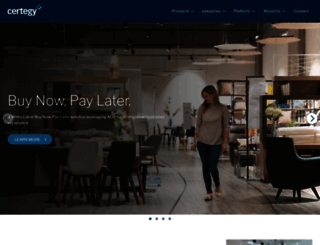Certegy | Digital payments for the world’s leading merchants
Page Load Speed
577 ms in total
First Response
102 ms
Resources Loaded
357 ms
Page Rendered
118 ms

About Website
Visit certegy.com now to see the best up-to-date Certegy content for United States and also check out these interesting facts you probably never knew about certegy.com
Certegy enables low-risk, low-cost transactions between consumers and businesses leveraging digital ACH, check and BNPL technology.
Visit certegy.comKey Findings
We analyzed Certegy.com page load time and found that the first response time was 102 ms and then it took 475 ms to load all DOM resources and completely render a web page. This is quite a good result, as only 10% of websites can load faster.